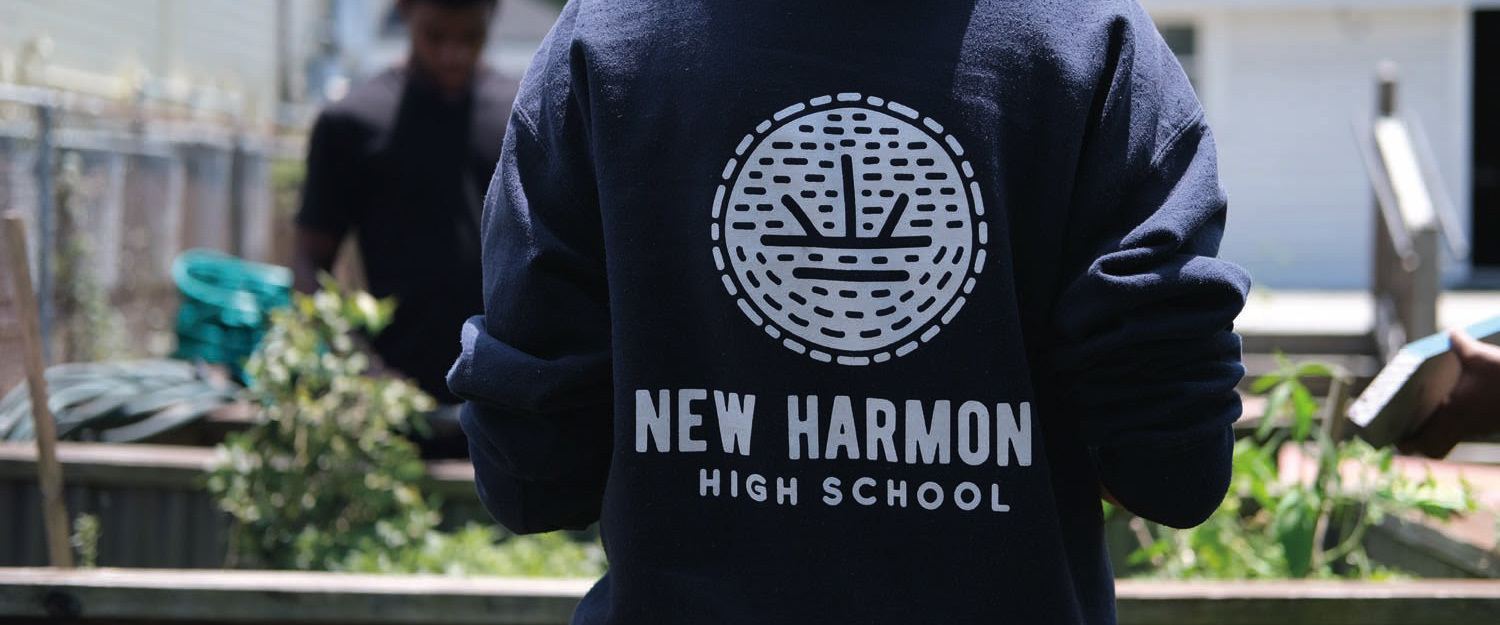How a class of young writers explored climate change through storytelling
Here’s how students in New Orleans published a book of student writing, and learned about storytelling and climate change in the process.

Autumn Maison, a ninth-grader at New Harmony High in New Orleans, always liked writing. But nothing prepared her for the joy of seeing her first story published.
“Oh, my gosh, I am so excited,” she said. “It feels like you’re a real author. It’s not just some essay you turn in to your teacher. It’s something that’s going to be around forever, something everyone is going to see.”
Artwork By Erik Kiesewetter
Autumn and her classmates in humanities class spent two weeks last fall working with volunteers from the literacy nonprofit 826 New Orleans to write, discuss, edit, and publish a book of short stories. “Once Upon a Time in a City Called New Orleans” is a 120-page anthology of student work, released in January, that imagines New Orleans in a future ravaged by unchecked climate change and environmental degradation.
One student wrote about the loss of gumbo due to a mass extinction of seafood. The protagonist had to scour the city for the vanished gumbo recipes to save a hallowed aspect of New Orleans culture.
Another student envisioned the city as a sort of “Waterworld” nightmare, with anarchy and rampant crime as civilization crumbles.
Autumn wrote a story called “Just a Straggler” about a character named Yubi Joyson, who’s blind and must navigate a flooded city relying only on his senses. The catch is that the words on all the signs have washed away, leaving only Braille–so Yubi has an advantage over sighted people and thrives.
Autumn said her story would not have been possible without guidance from the volunteers from 826 New Orleans. Among them was Nathanial Rich, author of “Losing Earth,” a nonfiction account of climate denialism and science in the 1970s and ‘80s.
Rich and other volunteers helped students shape their ideas into airtight narratives with strong characters and broad themes. They also inspired the students to embrace creativity and expression, and take risks with their work.
“They were really nice and good with criticism,” she said. “They’d say, ‘Put in more character development here,’ or ‘Just add something there.’ I learned stories are way better when you use sensory details, like how things smell and feel and sound.”
New Harmony humanities teacher Jeff Carver helped, too, working with the students on nuts-and-bolts English lessons such as grammar and sentence structure as they went along.
As a bonus, the project combined literacy with New Harmony’s central focus: the environment. Students had a chance to explore environmental and scientific issues while exercising their imaginations and learning about story arcs, character development, dialogue, and the power of storytelling.
“They understand the science, but they don’t always see the human element,” Carver said. “This allows them to consider the vision and mission of the school through a different lens.”
The book project was a hands-on way to merge humanities and science, but it was also an opportunity to learn the importance of storytelling in everyday life, Carver said.
“They learned how ideas and culture are kept alive through stories,” he said, noting that many of the students’ pieces focused on preserving the culture of New Orleans as environmental catastrophe engulfed the city.
New Harmony, a charter high school that opened in 2018, incorporates the environment and climate change into nearly every subject, with a particular focus on how it affects the fragile ecosystems in southern Louisiana. Students research topics like coastal erosion, water quality, fisheries, wetlands restoration, and other issues that affect the future of the Gulf coast.
Project-based and hands-on learning is also a key part of New Harmony’s curriculum that prioritizes meaningful, engaged learning. Students do internships in the community, applying what they’ve learned in the classroom to real-world challenges, gaining work experience and along the way.
Partnerships like the one between New Harmony and 826 New Orleans are common at XQ schools. Latitude 37.8 in Oakland, Ca., Grand Rapids Public Museum School in Grand Rapids, Mich., and Iowa BIG in Cedar Rapids, Iowa are among the XQ schools that have developed strong relationships with local nonprofits and businesses to enhance student learning.
These community partnerships, one of six XQ School Design Principles, play an important role in supplementing classroom lessons with on-the-ground experiences for students and a chance to make connections with experts and professionals in the community, said Sean McClung, XQ Institute’s senior school success officer.
“There’s always a great benefit when you can connect students with professionals in whatever field they’re studying,” he said. “Students learn how these folks got to where they are, what it’s like to do this particular job as a career, how it relates to what students are working on in school.”
Teachers also benefit because they can use the lessons–such as the ideas provided by 826 New Orleans—for future classes, and expand their understanding of particular topics such as writing, he said.
“And any time you can bring more adults into a classroom, there’s a real benefit,” McClung said.
But for Autumn, the thrill was in seeing her work published. New Harmony and 826 New Orleans were planning a book launch celebration, with readings, book signings, and a chance for public to discuss the book with the authors.
Autumn said she’s not sure what she wants to do when she grows up, but it’s likely to include writing – thanks to the inspiration from Carver and the 826 volunteers.
“I was so sad when the project ended,” she said, but added that whatever the next project is, she expects it to be just as rewarding and interesting. “I love my school.”
Are your students working on a real-life project with the potential for impact? Tell us about using #ReThinkHighSchool on social media or sign up as an XQ blog contributor.









